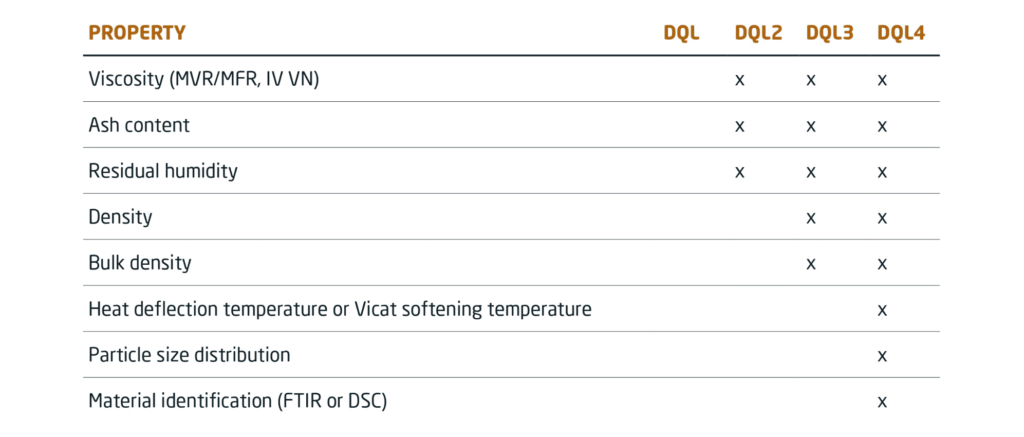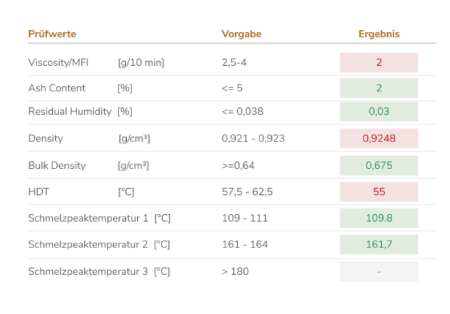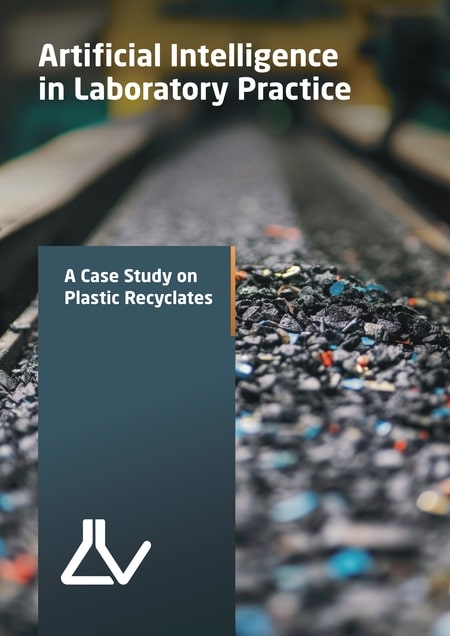LabV – The Data Management Platform
Blog
AI in the Laboratory – Part I
Artificial Intelligence in Laboratory Practice - Part I
A Case Study on Plastic Recyclates

Accurate and reliable data analysis and exploitation is often a challenge for laboratories.With the advent of AI-based solutions, the question arises as to how these technologies can be integrated into laboratory workflows to improve data quality and analysis. In this case study, we use an example from the polymer industry to illustrate how the integration problem can be solved and which specific functions AI can perform in the testing laboratory.
Data at the Heart of Quality Assurance
Plastics are versatile materials that have found applications in almost every industry — from simple plastic bags to advanced sealing rings in jet engines. However, despite their many benefits, plastics pose significant environmental challenges due to their resistance to degradation. The best approach for combating the growing levels of plastic waste today is through recycling. This raises the challenge that suppliers and plastics processors must ensure that the products using recycled materials remain up to the same standards as the original products. This requires a consistent quality control that analyzes polymer materials and polymer blends to make sure that they are suitable. To facilitate the trade of recycled plastics, a consortium in Germany has prepared the DIN specification DIN SPEC 91446, Classification of Recycled Plastics by Data Quality Levels for Use and (Digital) Trading. This specification ensures stringent quality control of plastic materials by requiring comprehensive data collection.
The DIN 91446 specification defines four different levels — data quality level 1 (DQL1) through to data quality level 4 (DQL4) — and with each increasing level, material suppliers need to provide more information and property data about the recycled plastic material they are supplying (Table 1). The specification describes the requirements for data quality and quantity, the rules for poorly defined data, and identifies the recyclate ratios in plastic materials. These levels ensure robust quality control, and manufacturers need to label their products according to the specification level they have achieved.

This also means that the higher the status, the more data companies need to collect, analyze, and document. If companies use 3 different suppliers, as in our case study (see below), and gather 8 data points for each of 10 batches, the laboratory is handling a whopping 240 data points. In other words, obtaining and analyzing all this data generated according to the DIN 91446 specification takes a lot of time and manpower and is often prone to human error.
This is particularly true when data is fragmented across different systems with today’s sparse time and resources. A task as simple as providing the product documentation can take hours. Also, an in-depth analysis is literally impossible because it takes too much time to collect and analyze the data.
Quality Control of Recyclate LDPE/PP blends
This case study focuses on a plastics processor that obtains its low-density polyethylene /polypropylene (LDPE/PP) blends from three different companies. The quality control tests were performed regularly for each batch in line with the DQL4 of the DIN 91446 specification as shown in Table 1.
The initial situation was that laboratory data was fragmented across a variety of testing devices. The LIMS system was not fully connected with all lab instruments and the IT infrastructure, with some data scattered across a variety of Excel sheets. Few co-workers were able to access all data and retrieve the information required. This resulted in a number of issues:
1. Compliance means a lot of data
The analyses required for obtaining maximum compliance cover different analytical instruments and analysis methods — including Micro Flow Imaging (MFI), particle size analyzers, and Differential Scanning Colorimetry (DSC). The lab was left with a disconnected LIMS and the need to manually sift through a range of data sources and Excel files.
2. Lack of data oversight means a lack of insights
Even when all data can be retrieved, the complexity and time-consuming nature of data searches often hinder co-workers’ capacity to perform effective quality control. This means that supplier issues and discrepancies in recyclates are not identified promptly, leading to delayed responses and potentially compromised quality control efforts. But even with a cohesive data management system, the sheer volume of the data means that crucial insights into material performance and quality often remain hidden. No one has the time to sift through and analyze such vast amounts of data manually. An AI-powered solution is able to uncover and visualize these hidden insights efficiently, enhancing overall quality control efforts.
3. Lack of competitiveness
In today’s industry, laboratories that fail to explore their data risk falling behind. The arrival of AI in the field has made this issue even more pressing. Those who do not adopt advanced data management tools and AI-powered data exploitation face slower development cycles and less effective quality control, putting them at a significant disadvantage. Competitors using AI can perform faster, more accurate analyses, derive meaningful insights from complex data, and make better decisions.
We now show that these challenges can be overcome by using a data management platform and demonstrate with specific examples from the lab what AI can do. This includes informing decision-making on choosing suppliers, identifying supplier issues early, and providing visualizations with ease. These examples illustrate that AI is not just an idea anymore; it is a practical, essential tool for sustained competitiveness. As we will see, AI-powered solutions can transform complex data into actionable insights, streamline quality control processes, and enhance overall operational efficiency.
From Data Fragmentation To Complete Oversight

As a first step, the processor implemented a data management platform, aimed at maximizing data integrity and data quality in line with the DIN specification. The data management platform utilized a patented mapper that allowed the integration of all instrument data without being a major IT project. This enabled the integration of all laboratory instruments without a large amount of IT resources (Figure 1).
The full data integration reduced manual data entries and eliminated the need for Excel, resulting in full data transparency, fewer errors, and significant time savings. The data platform provides a comprehensive overview of the polymer materials supplied.
Potential issues are highlighted in red, directing the user’s attention to data requiring immediate action (Fig. 2). Materials from different suppliers and various analytical tests can be cross-referenced with greater accuracy, offering complete oversight and understanding of the materials being analyzed. This integration allows for the quick identification of issues, trend spotting over time, and comprehensive data analysis using both manual methods and the AI digital assistant within LabV.

In the following blog post we take a closer look with specific prompts that show how AI can be used.
AI in Laboratory Practice

Everyone is talking about artificial intelligence (AI). In this case study however, we show how AI can be used in the lab on a practical level.
Learn more in this case study:
- How AI-based solutions can integrate fragmented laboratory data into a cohesive system
- What AI can do in your lab to improve efficiency and to exploit all data
- Practical examples of how AI can streamline data analysis
- The benefits of an AI-powered data management platform in transforming laboratory operations, reducing errors, and saving time.
Download the case study now and discover what AI can do in your laboratory.
